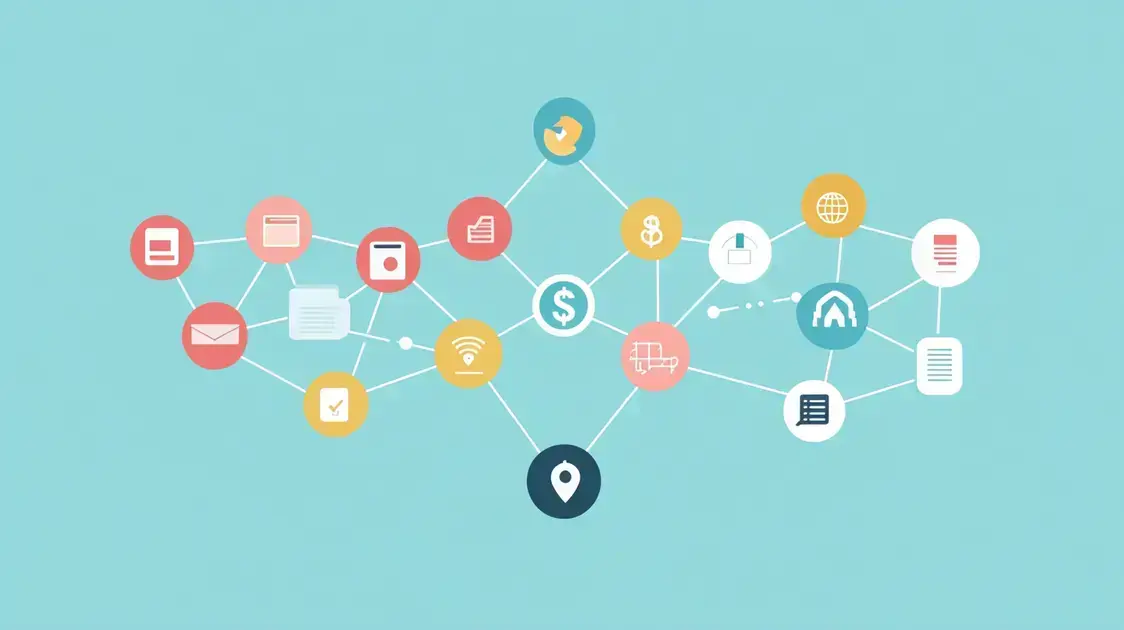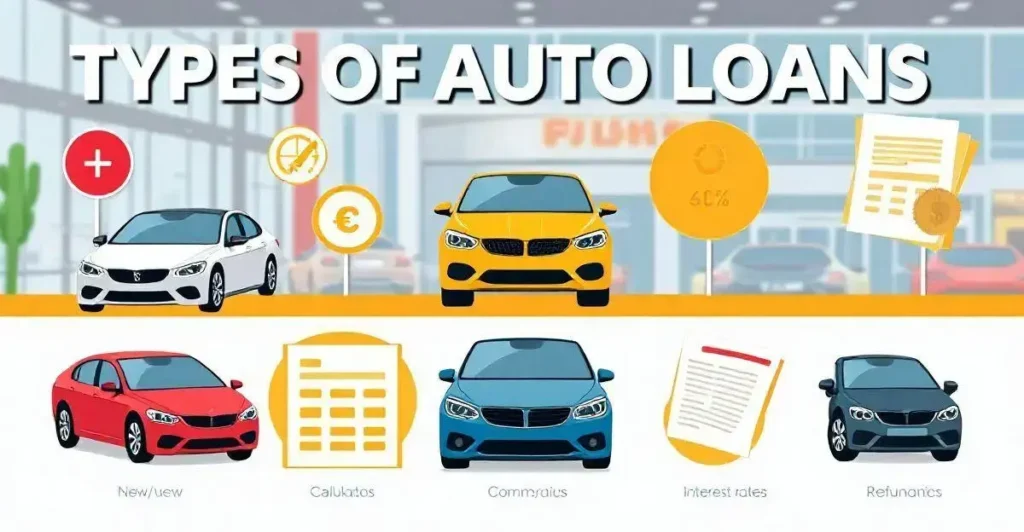Peer-to-Peer Loans vs Traditional Loans offer different borrowing options. P2P loans connect borrowers with individual lenders online, while traditional loans come from banks or credit unions.
P2P loans often have lower fees and faster approval. Traditional loans, however, offer more stability and regulation, which can be beneficial for long-term financial planning.
Understanding Peer-to-Peer Loans
Peer-to-peer loans, often called P2P loans, allow individuals to borrow money directly from other individuals through online platforms. This process cuts out the traditional banks and lenders, reducing fees and potentially lowering interest rates for borrowers.
When comparing Peer-to-Peer Loans vs Traditional Loans, it’s important to consider factors such as accessibility and cost differences.
How P2P Lending Works
In a P2P lending system, borrowers create profiles on lending websites. These profiles include their credit score, the amount they want to borrow, and the purpose of the loan. Investors can then browse these profiles and choose to fund part or all of the loan based on their risk preference.
Benefits of Peer-to-Peer Loans
P2P loans usually offer faster access to funds than traditional banks. The online application process is often more straightforward, and approvals can happen in days rather than weeks.
Additionally, since they operate without a physical bank, the overhead costs for P2P platforms are lower, which can result in better rates for borrowers. This is one of the key advantages when analyzing Peer-to-Peer Loans vs Traditional Loans.
Risks of Peer-to-Peer Lending
While P2P loans come with many benefits, they also have their risks. Borrowers may face higher interest rates if they have a poor credit score. Additionally, the lack of regulatory oversight means that some platforms may charge hidden fees.
Who Should Consider Peer-to-Peer Loans?
P2P loans can be a great option for consumers who may not qualify for traditional bank loans due to credit issues or other financial challenges. However, it’s important to carefully evaluate your financial situation and determine if the terms offered are favorable compared to other lending options.
The Mechanics of Traditional Loans
The Mechanics of Traditional Loans
Traditional loans are primarily offered by banks and credit unions, serving as a popular choice for many borrowers seeking financing. These loans vary in types, including personal loans, auto loans, and home mortgages. Understanding how they work is essential for making informed decisions.
Application Process
The process begins when a borrower submits an application to a lender. The application typically requires personal information, the amount of money needed, and the purpose of the loan. Lenders evaluate this information to determine if the borrower qualifies for the loan.
Credit Assessment
One of the key factors in the approval process is the borrower’s credit score. Lenders use this score to assess the risk involved in lending money. A higher credit score generally increases the chances of loan approval and results in more favorable interest rates.
Loan Terms
If approved, the lender will present the borrower with the loan terms, including the interest rate, repayment period, and any fees involved. These terms can vary significantly between lenders and loan types. It’s important for borrowers to understand the total cost of the loan, including interest and fees.
Repayment Structure
Traditional loans typically follow a fixed repayment schedule. Borrowers make monthly payments over a specific period until the loan is fully repaid. Most payments include principal and interest, but some loans may have additional fees.
Considerations for Borrowers
It’s vital for borrowers to consider their financial capacity before taking on a traditional loan. Assessing income, expenses, and any other debts will help determine how much can be borrowed safely. Understanding the obligations involved in traditional loans also leads to healthier financial decisions.
Additional Factors
Other factors that may influence the loan process include the loan-to-value ratio for secured loans and potential collateral requirements, which are often necessary for personal and home equity loans. This collateral can provide security for the loan, reducing the lender’s risk.
Comparing Interest Rates: P2P vs Traditional

When considering loans, one of the most important factors to evaluate is the interest rate. The interest rate can significantly impact the total amount you will pay over time. Understanding how interest rates compare between Peer-to-Peer Loans vs Traditional Loans helps borrowers make informed choices.
Interest Rates on P2P Loans
P2P loans often feature competitive interest rates. These rates can range from around 5% to 30% or more, depending on the borrower’s credit score and the platform’s policies. Since P2P lenders typically have lower overhead costs than traditional banks, they can pass those savings on to borrowers in the form of lower rates.
However, comparing Peer-to-Peer Loans vs Traditional Loans is essential to finding the best option for your financial needs.
Interest Rates on Traditional Loans
In contrast, traditional loans usually have more standardized interest rates, which may range from 3% to 15%. Factors such as the type of loan, the lender’s policies, and the borrower’s creditworthiness influence these rates. Traditional banks may also have hidden fees that can increase the overall cost of the loan.
Factors Affecting Interest Rates
Several factors determine interest rates for both P2P and traditional loans. These include the borrower’s credit score, income level, loan amount, and repayment term. A borrower with a high credit score is likely to receive a lower interest rate from both P2P lenders and traditional banks.
Semi-Annual Adjustments and Fixed Rates
P2P loans often offer fixed rates, making it easier for borrowers to budget monthly repayments. Traditional loans also provide fixed-rate options, but some loans, like credit lines, may offer variable rates, which can change over time based on market conditions.
The Importance of Comparing Rates
Before selecting a loan option, it is essential to compare interest rates. A small difference in interest rates can translate into a significant amount of money over the life of a loan. Using online comparison tools or consulting with financial advisors can help borrowers navigate these options effectively.
Borrower Experience in P2P Lending
The borrower experience in peer-to-peer (P2P) lending is designed to be straightforward and user-friendly. When someone seeks a P2P loan, they usually start by filling out an online application on a P2P platform.
This process is often faster and more efficient than traditional methods, making Peer-to-Peer Loans vs Traditional Loans an important comparison for borrowers.
Simplified Application Process
Unlike traditional banks, where paperwork and bureaucracy can slow down approvals, P2P lending platforms simplify the application. Most platforms require basic personal information, income details, and the loan amount needed. Within days, borrowers typically receive a decision.
Transparency in Funding
In P2P lending, transparency plays a significant role. Borrowers can see multiple lending options and their corresponding interest rates. This openness allows borrowers to choose what works best for their financial situation, as they can compare offers from different investors easily.
Understanding Peer-to-Peer Loans vs Traditional Loans helps borrowers identify the best rates and terms available.
Communication with Lenders
Another unique aspect of the borrower experience is direct communication with individual lenders. This interaction can create a more personalized lending experience. Some platforms allow potential borrowers to provide additional context about their needs, which can help build trust with investors.
Flexibility in Loans
P2P loans often come with flexible terms. Borrowers can select the amount and duration of their loans according to their repayment abilities. This flexibility makes P2P lending particularly appealing to those who may need less money or want to pay it back more quickly.
Potential Risks and Challenges
While the borrower experience in P2P lending has many advantages, there are also risks. Some borrowers may face higher interest rates if they have lower credit scores. Additionally, P2P platforms may not have the same regulatory protections as traditional banks, which can lead to uncertainty.
Overall Satisfaction
Many borrowers report high satisfaction with the P2P lending process. The speed of funding, ease of use, and ability to select loan options often contribute to positive experiences. This model appeals to those who value efficiency and convenience when seeking financial help.
The Role of Credit Scores
Credit scores are vital in the lending process, affecting both peer-to-peer (P2P) loans and traditional loans. A credit score is a number that reflects your creditworthiness. This score helps lenders determine how likely it is that you will repay the loan.
When considering Peer-to-Peer Loans vs Traditional Loans, your credit score can be a key factor in the loan approval process.
Understanding Credit Scores
Credit scores typically range from 300 to 850. A higher score suggests a lower risk for lenders, while a lower score indicates a higher risk. Various factors affect your credit score, including payment history, amounts owed, length of credit history, new credit, and types of credit used.
Impact on P2P Lending
In P2P lending, your credit score plays a significant role in loan approval and interest rates. Lenders on P2P platforms often look at the credit score of borrowers to decide whether to invest in their loans. A good credit score can lead to more funding options and lower interest rates compared to Peer-to-Peer Loans vs Traditional Loans.
Impact on Traditional Loans
Similarly, traditional lenders place a high value on credit scores. Banks typically have set criteria regarding what scores qualify for loans. Borrowers with higher scores may access lower rates, while those with lower scores could face higher fees and interest rates.
Building and Maintaining a Good Credit Score
To ensure access to better loan options, it is crucial to build and maintain a good credit score. This can be done by paying bills on time, keeping credit card balances low, and monitoring your credit report for errors. Consistent positive financial behavior can help increase your score over time.
Effects of Low Credit Scores
Borrowers with low credit scores may find it challenging to secure loans or may only qualify for loans with high-interest rates. This situation can lead to a cycle of debt, making it more difficult to improve their financial situation.
The Importance of Credit Awareness
Understanding your credit score and how it impacts borrowing is essential. Utilizing resources to check your score regularly and educate yourself about effective credit management will empower you to make better financial decisions.
Pros and Cons of Each Loan Type

Pros of Peer-to-Peer Loans
- Lower Interest Rates: P2P loans often come with competitive rates, especially for borrowers with good credit.
- Quick Access to Funds: The application process is usually fast, and borrowers can receive funds in a matter of days.
- Flexibility: Borrowers can often choose loan amounts and repayment terms that suit their needs.
- Less Bureaucracy: The online nature of P2P lending reduces the paperwork and time spent dealing with traditional bank processes.
Cons of Peer-to-Peer Loans
- Variable Approval Criteria: Each platform has different standards, so some borrowers may face challenges depending on the lender’s requirements.
- Higher Rates for Poor Credit: Borrowers with lower credit scores may face significantly higher interest rates compared to traditional loans.
- Limited Regulation: P2P lending platforms are less regulated than traditional banks, which might pose risks to borrowers.
Pros of Traditional Loans
- Standardized Process: Traditional loans usually have established processes and regulations, providing more security.
- Access to Larger Amounts: Banks often offer larger loan amounts, which can suit bigger financial needs.
- Consistent Rates: Borrowers with good credit can secure fixed rates that provide stability in payments.
- Established Trust: Many people feel safer borrowing from traditional banks due to their credibility and historical presence.
Cons of Traditional Loans
- Longer Approval Process: Getting approved for a traditional loan can take longer due to extensive paperwork and credit checks.
- Higher Fees: Traditional banks often charge fees that can increase the overall cost of loans.
- Rigid Terms: Borrowers might find less flexibility in terms and loan amounts compared to Peer-to-Peer Loans vs Traditional Loans.
Choosing Between Peer-to-Peer Loans and Traditional Loans
Ultimately, deciding between peer-to-peer loans and traditional loans depends on your unique financial situation and needs. Understand the pros and cons of each option, along with how your credit score may affect your borrowing experience.
Peer-to-peer loans offer lower rates and faster access to funds, making them appealing for many borrowers. On the other hand, traditional loans provide stability and security, which some individuals may prefer.
As you explore your options, consider emerging trends in the loan market. From the growth of P2P lending to advancements in technology and data analytics, staying informed will empower you to make the best decision.
In the end, whether you choose a P2P loan or a traditional loan, knowing your financial goals and understanding the lending landscape can lead to successful borrowing experiences.


